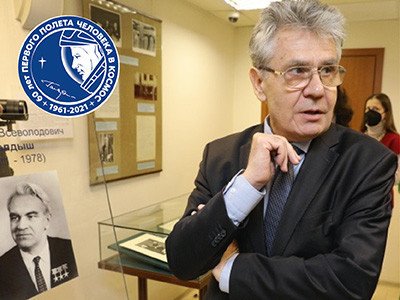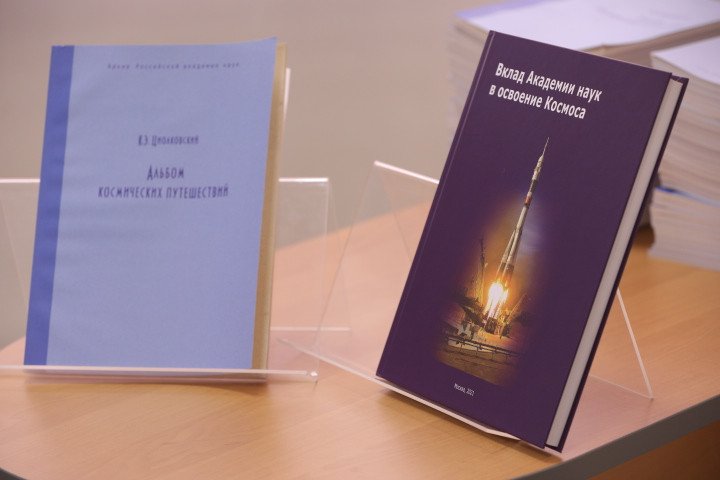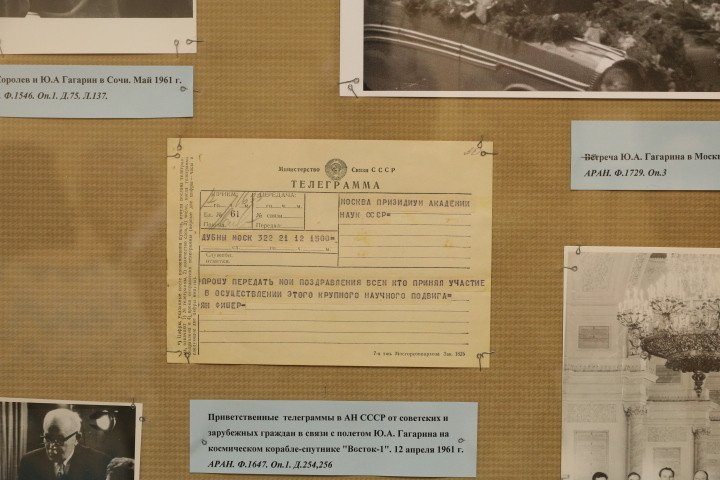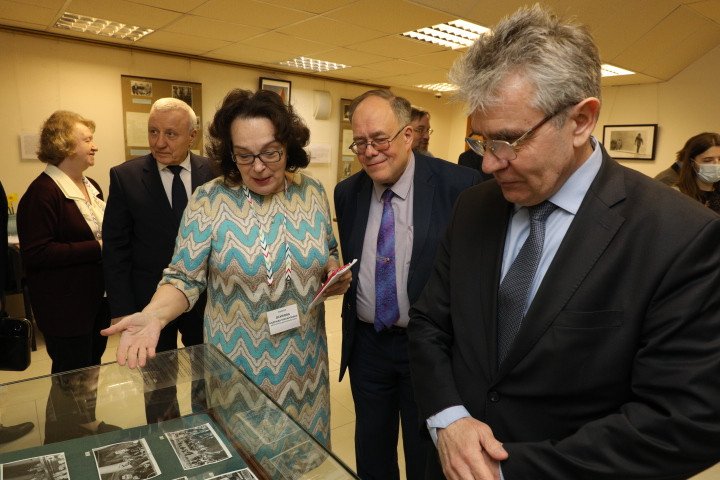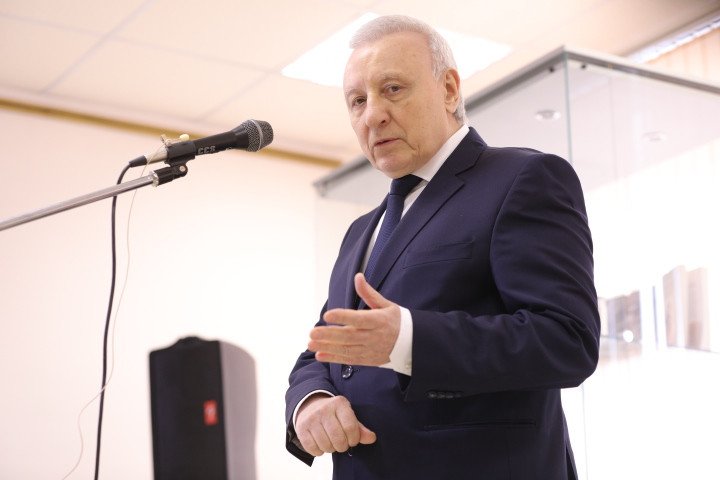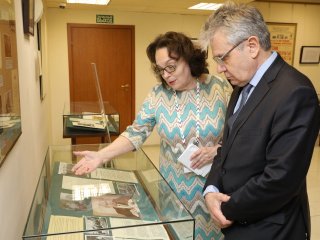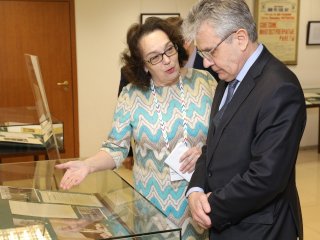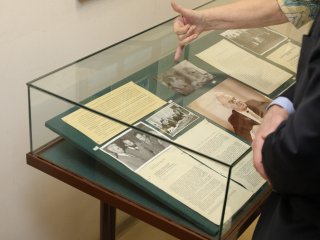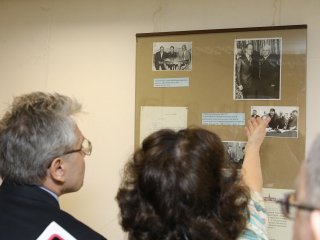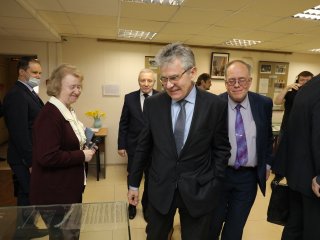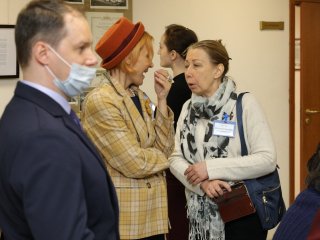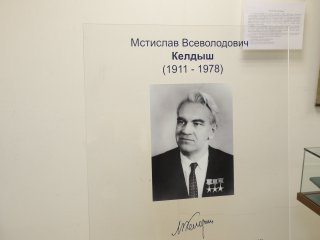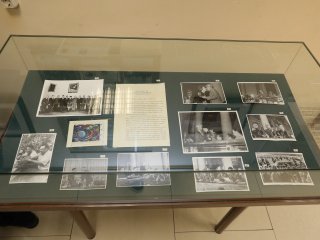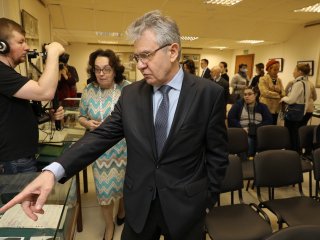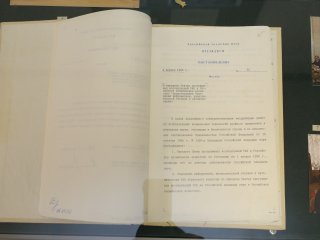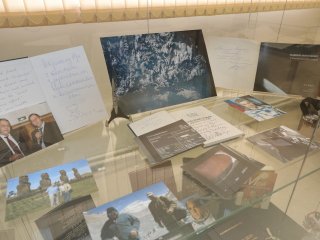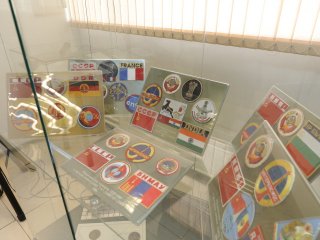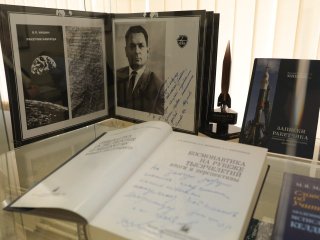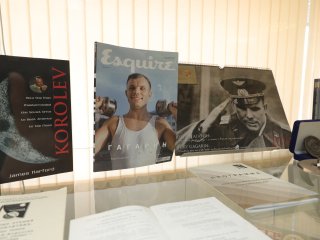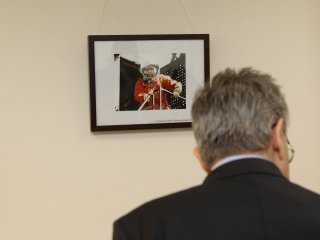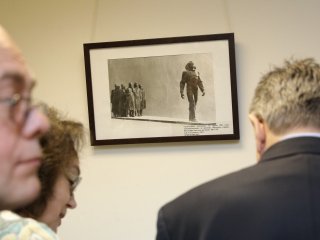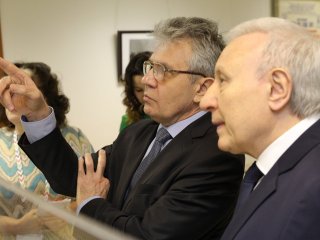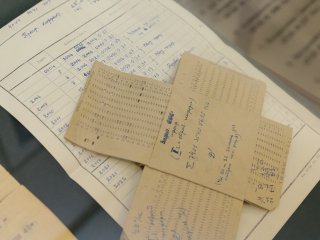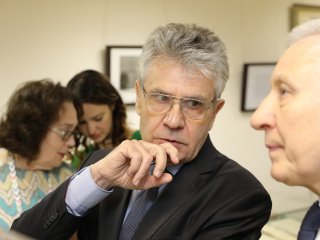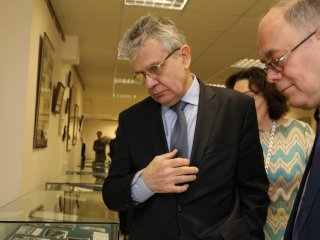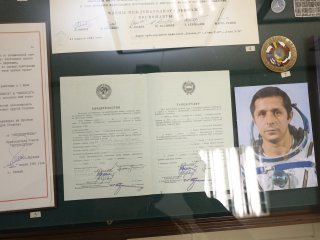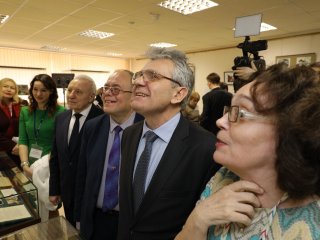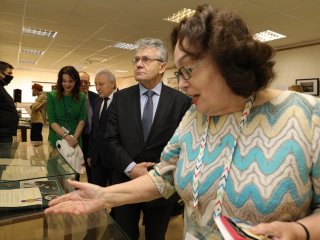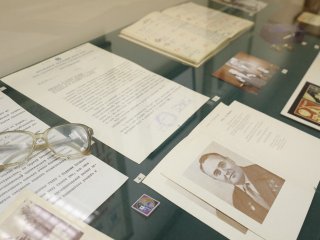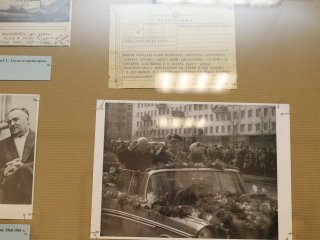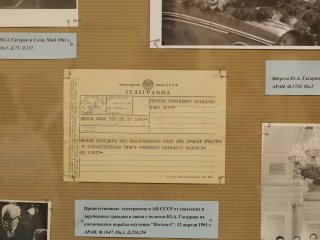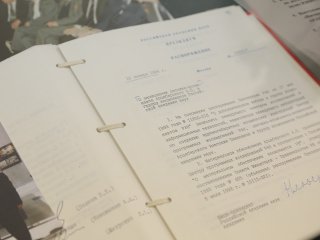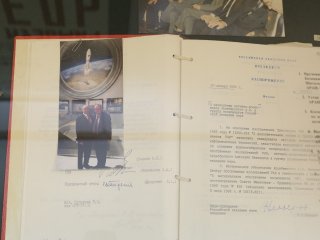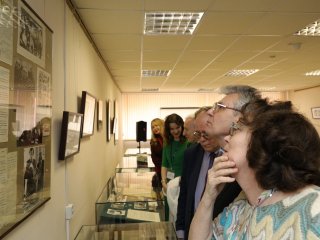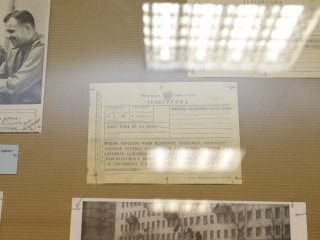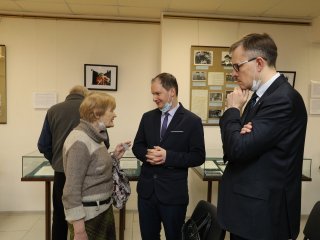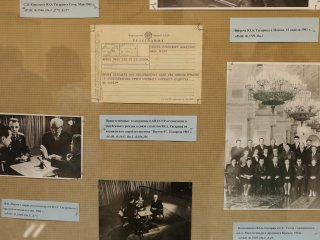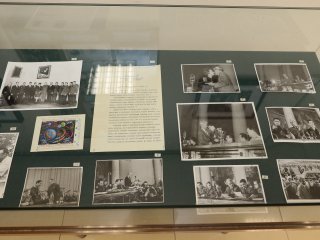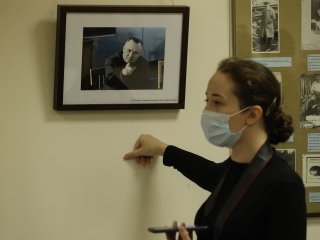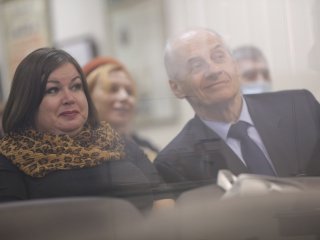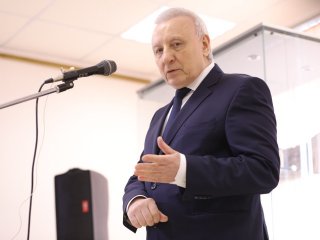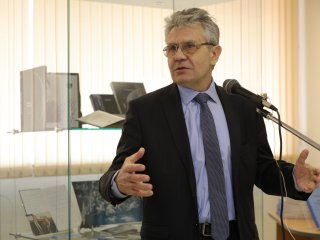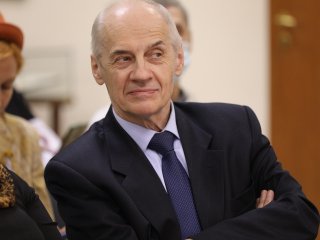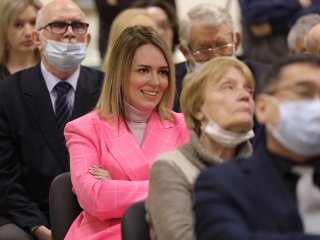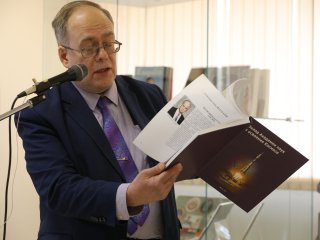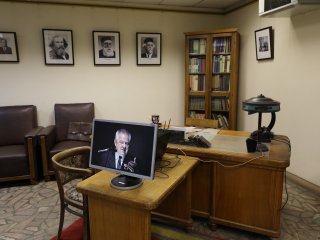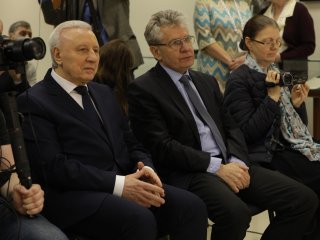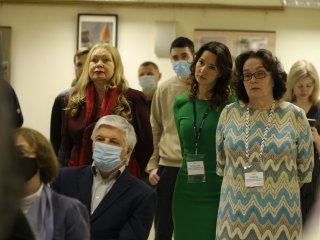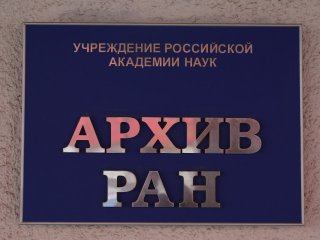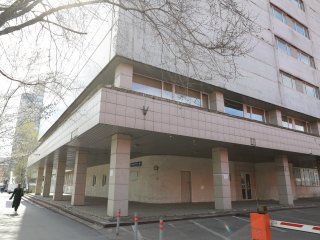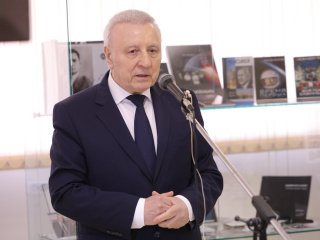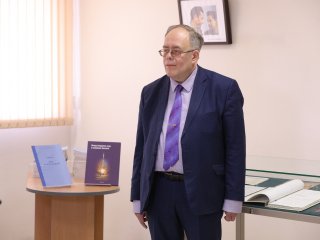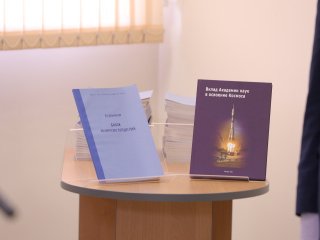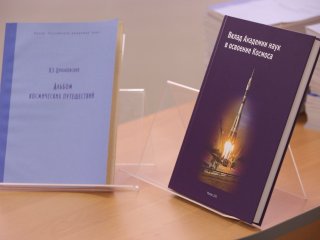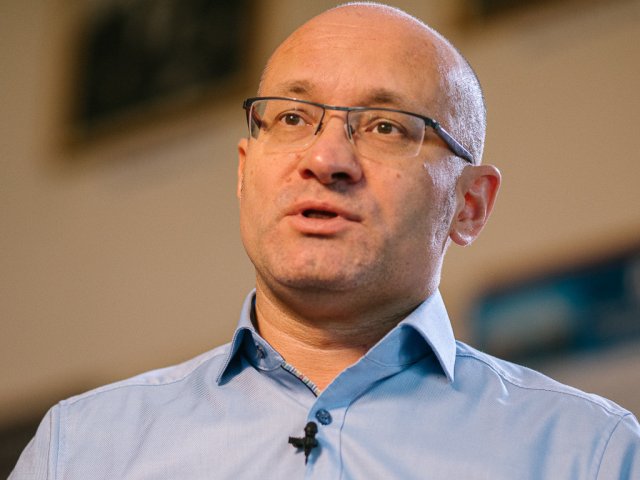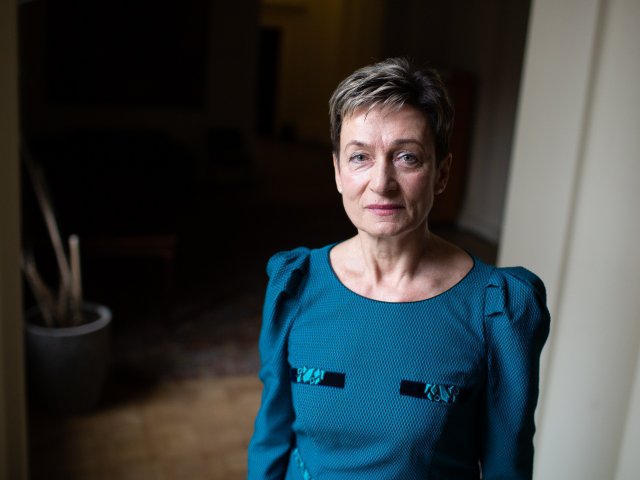Exhibition “Contribution of Academy of Sciences to Space Exploration” has opened today in the Archive of the Russian Academy of Sciences. The unique exposition created by scientists of the Russian Academy of Sciences was visited by President of the Russian Academy of Sciences Alexander Mikhailovich Sergeev and Vice President of the Russian Academy of Sciences Valery Grigoryevich Bondur. The guests were met by the Director of the Archive of the Russian Academy of Sciences Alexander Viktorovich Rabotkevich.
In the renovated exhibition hall of the Archive, one can now see sections dedicated to the founders of Russian cosmonautics K. E. Tsiolkovsky, F. A. Zander, S. P. Korolev, M. V. Keldysh, as well as the first cosmonaut who made a flight into the outer space 60 years ago, Yuri Alekseevich Gagarin.
A special place in the exposition is occupied by documents reflecting the contribution of the USSR Academy of Sciences (now RAS) to the development of the space industry in our country. The Archive of the Russian Academy of Sciences has presented for the first time new unique publications prepared according to archival documents: the books Contribution of the Academy of Sciences to Space Exploration and K. E. Tsiolkovsky. The Album of Space Travel.
Exhibition “Contribution of Academy of Sciences to Space Exploration” Opened in the Archive of the Russian Academy of Sciences. Photo: Nikolay Mokhnachev / Scientific Russia
The exhibition guests were able to see original documents, artifacts, photographs from the Archives of the Russian Academy of Sciences, reflecting the theoretical foundations of the development of domestic and world cosmonautics and rocket technology. The black-and-white photographs show the chief space designer of the USSR Sergey Pavlovich Korolev at work, discussion of space projects at a round table, launches of Soviet rockets, and much more. Among the documents is a record of Yuri Gagarin’s conversations with ground control, a US Senate resolution congratulating the USSR Academy of Sciences and NASA on the successful completion of the joint Soviet-American flight of the Soyuz and Apollo spacecraft, a notebook with notes by scientist in the field of space ballistics, Corresponding Member of the Russian Academy of Sciences E. L. Akim, and other documents.
One of the most interesting parts of the exposition is the telegrams with thanks to the USSR Academy of Sciences for the achievements in the field of cosmonautics.
Exhibition “Contribution of Academy of Sciences to Space Exploration” Opened in the Archive of the Russian Academy of Sciences. Photo: Nikolay Mokhnachev / Scientific Russia
A separate exhibition stand is dedicated to the main theorist of the Soviet space program, Mstislav Vsevolodovich Keldysh, who headed the USSR Academy of Sciences from 1961 to 1975. Under Keldysh, the Academy became the world’s largest center of fundamental science. In the mid-1950s, Mstislav Vsevolodovich led the development of the theoretical foundations for putting artificial bodies into near-Earth orbits and solved many problems of the mechanics of space flight. Keldysh’s name is also associated with the development of computational mathematics in the USSR.
President of the Russian Academy of Sciences Alexander Mikhailovich Sergeev spoke to the guests of the exhibition about the close relationship between the academic science and the space industry.
“If we go back to the very beginning, namely to 1959, we see a document – it is also presented at the exhibition – on the creation of the Interdepartmental Scientific and Technical Council for Space Research of the USSR Academy of Sciences. The USSR Academy of Sciences played a key role in the development of the space industry. Outstanding scientists and rocket and space technology designers worked in the Interdepartmental Council, and it provided scientific and technical support for our entire space industry. In 1959, this council was headed by M. V. Keldysh. The Interdepartmental Council for Space Research and the USSR Academy of Sciences were real customers for the space industry, in the full sense of the word: they distributed funding to institutes working on the space program, decided what work to do, and so on. Today we continue to work on scientific space, but funding under the Federal Space Program has been steadily falling in recent years. Last year we sounded an alarm because this funding was planned to be reduced to zero in two or three years. Our joint efforts with Roscosmos at the beginning of this year, I think, were crowned with success, and at the highest level it was decided to restore funding for scientific space within the framework of the Federal Space Program,” commented the head of the Russian Academy of Sciences.
Exhibition “Contribution of Academy of Sciences to Space Exploration” Opened in the Archive of the Russian Academy of Sciences. Photo: Nikolay Mokhnachev / Scientific Russia
Today, the exhibition guests were also able to see exhibits reflecting the activities of academicians V. P. Mishin, V. P. Glushko, V. A. Kotelnikov, and other space scientists. G. B. Efimov’s drawings are organically interwoven into the exposition, representing playfully the theoretical developments of academician T. M. Eneev. There is also a special Intercosmos section about the Soviet space program that allowed various countries and organizations to participate in space research. The exhibition hall of the Archive of the Russian Academy of Sciences also presents sketches of collections of space suits based on drawings by K. E. Tsiolkovsky and the Cosmic Voyage movie (1936), made by students of the Costume Design studio of the Na Kashirke gallery under the direction of artist V. A. Bychkov.
Vice President of the Russian Academy of Sciences Valery Grigoryevich Bondur congratulated the organizers of the exhibition of the Archive of the Russian Academy of Sciences:
V.G. Bondur. Photo: Nikolay Mokhnachev / Scientific Russia
“Space exploration in the Soviet years is a colossal feat of our people. Imagine, 12 years after the hardest World War II, which destroyed a significant part of our country and entailed huge human casualties, Sputnik-1, the first artificial Earth satellite was launched! And 15 years later, the first cosmonaut, Yuri Alekseevich Gagarin, went into the outer space. This was followed by a whole series of scientific achievements related to space exploration, all these achievements are set out in the new book Contribution of the Academy of Sciences to Space Exploration that was presented to all of us today. Six cosmonaut pilots of our country have joined the Russian Academy of Sciences, five of them are Corresponding Members, and one is Full Member,” says Valery Bondur.
The exhibition dedicated to the contribution of academic science to space exploration will now operate in the Archive of the Russian Academy of Sciences on a permanent basis. Today, after the grand opening of the collection and inspection of the main hall, Head of the Russian Academy of Sciences A. M. Sergeev and Vice President of the Russian Academy of Sciences V. G. Bondur also visited other expositions of the Archive of the Russian Academy of Sciences and its scientific laboratories.
